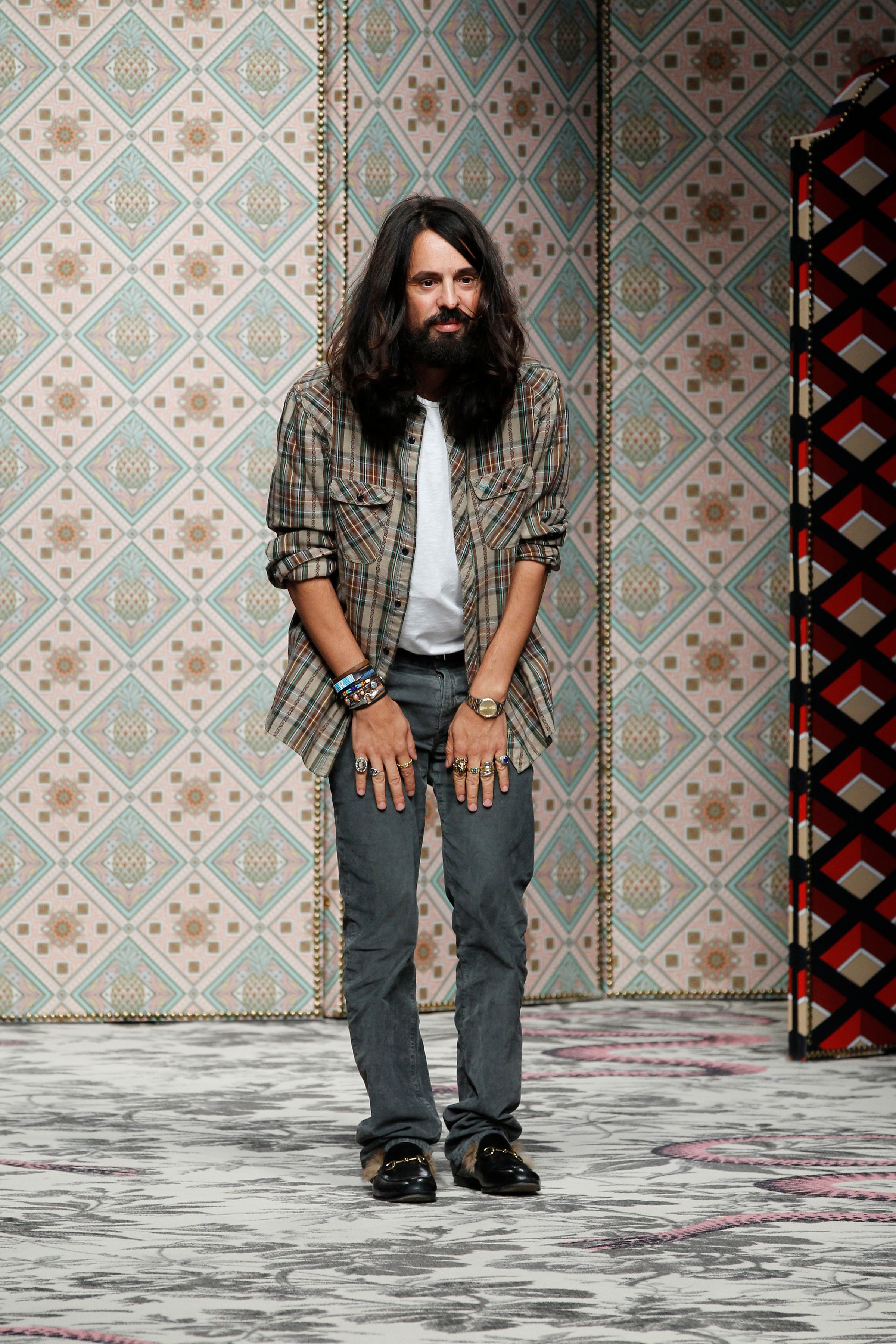
From top editors to snobby buyers to gushing bloggers, Gucci has become the brand that is currently on every fashion insider’s lips—not to mention their feet and hips. Not since Tom Ford’s winning streak in the late ’90s and early 2000s has this historic Florentine brand had such a hot moment. And that’s all the more surprising because the company had been on creative cruise control since Ford departed in 2004, and in the past two years, its quarterly sales had begun a retreat.
The shower of buzz and bankable product is thanks to new CEO Marco Bizzarri and creative director Alessandro Michele, who together in less than 10 short months have orchestrated an unexpectedly fast fashion turnaround. Bizzarri was plucked from within the ranks of the sprawling luxury group Kering (which also owns Gucci), where as CEO of the Italian leather-goods company Bottega Veneta he increased sales from $440 million a year in 2009 to more than $1.2 billion by 2014.
Upon arriving at Gucci in January 2015, Bizzarri made the swift but unorthodox move of hiring the unknown Michele, who had been working inside the company’s accessories department for over a decade, as the brand’s new creative director. “There was a need to change perspective by recapturing the spirit of innovation and by concentrating on the present and future of the brand,” says Bizzarri.
Michele may have been unknown, but he understood immediately how to jump-start a sleepy Gucci. In just two seasons, his fashion shows in a far-flung warehouse became the must-see events in Milan, while his very particular vision of eccentric, intricately dressed teenagers has made geek chic not only the new guiding creative force at Gucci but a full-fledged industry trend that has other fashion brands emulating Gucci’s new look. He staged an unexpected show on the streets of New York in June, created a colorful, personality-filled new store concept in the brand’s flagship Montenapoleone boutique in Milan (which will soon roll out globally) and has zeroed in on small but crucial details like creating rich, floral printed shopping bags that are too beautiful to throw away.
Of course, Michele’s magical touch centers on Gucci’s iconic accessories, especially the brand’s classic horsebit loafer which he reimagined as an achingly cool, fur-lined slipper that has both men and women lining up to buy at $995 a pair. The seismic changes have even reached fashion’s notoriously hard-to-please niche multibrand boutiques like Dover Street Market and Colette, who are now buying Gucci for the first time in years. Not bad for a brand that will celebrate its 95th birthday next year. —J.J. Martin
More Must-Reads from TIME
- Why Biden Dropped Out
- Ukraine’s Plan to Survive Trump
- The Rise of a New Kind of Parenting Guru
- The Chaos and Commotion of the RNC in Photos
- Why We All Have a Stake in Twisters’ Success
- 8 Eating Habits That Actually Improve Your Sleep
- Welcome to the Noah Lyles Olympics
- Get Our Paris Olympics Newsletter in Your Inbox
Contact us at letters@time.com